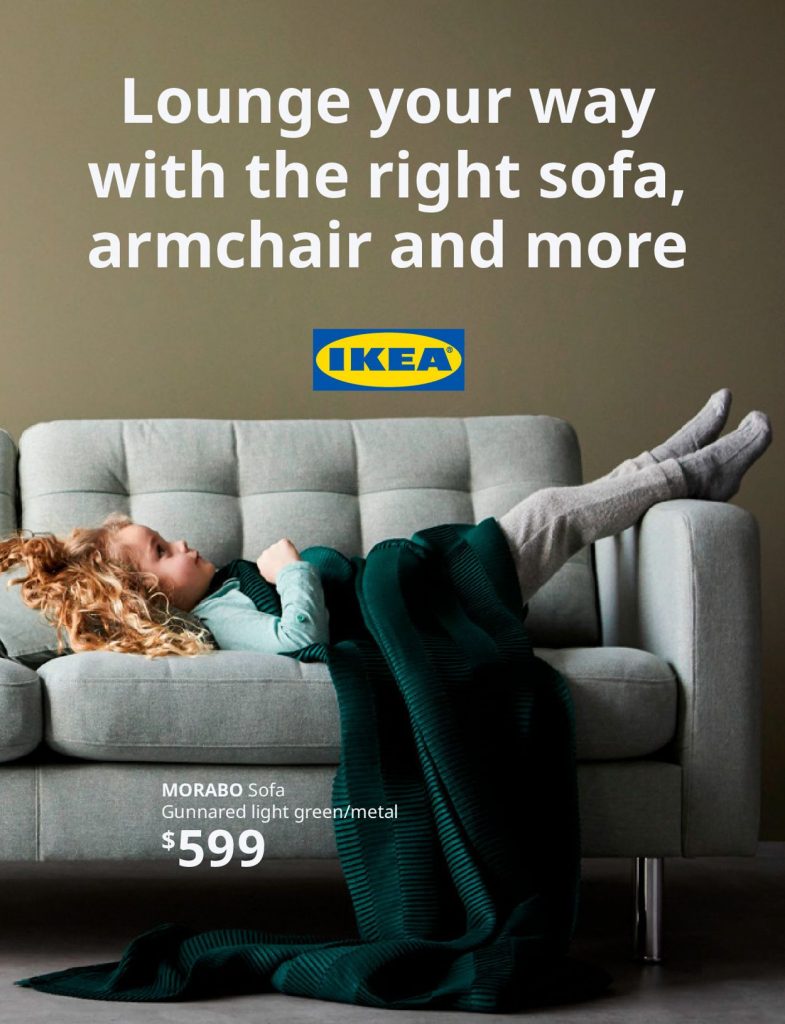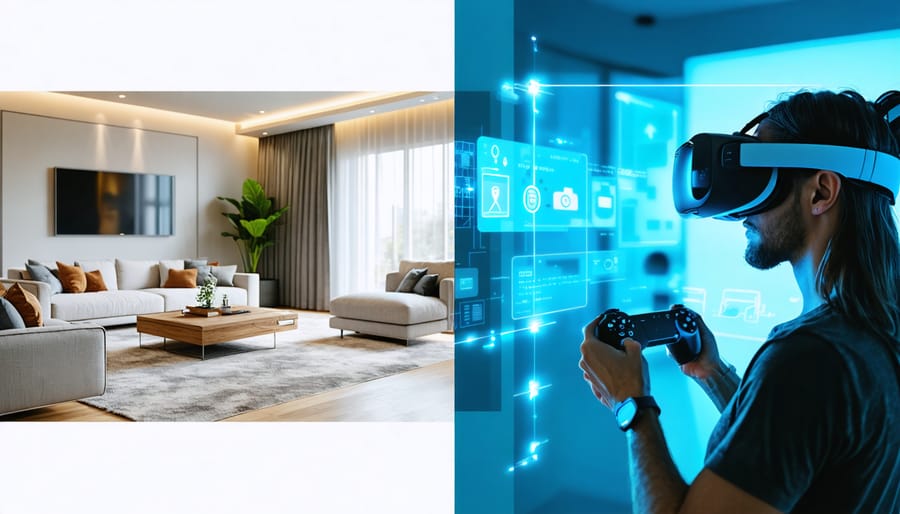
Transform Your Home Design With Unity VR: From Concept to Reality
Virtual reality development in Unity transforms interior design projects from static concepts into immersive, interactive experiences. Through VR design visualization, professionals can now create photorealistic walkthroughs, enabling clients to experience spaces before they’re built. Unity’s powerful XR toolkit streamlines the development process, offering drag-and-drop functionality for common VR interactions like teleportation and object manipulation.
For designers and developers, Unity’s VR capabilities extend beyond basic visualization to include real-time lighting adjustments, material switching, and furniture rearrangement – all within the virtual environment. This technology bridges the gap between conceptual design and practical implementation, reducing revision cycles and improving client satisfaction. Whether creating residential showcases or commercial space planning tools, Unity’s VR framework provides the essential building blocks for crafting compelling virtual experiences that drive design decisions and enhance client communication.
The integration of Unity VR projects into interior design workflows represents a paradigm shift in how spaces are conceived, presented, and refined, making it an indispensable tool for modern design professionals.
Why Unity VR is Perfect for Home Design Projects
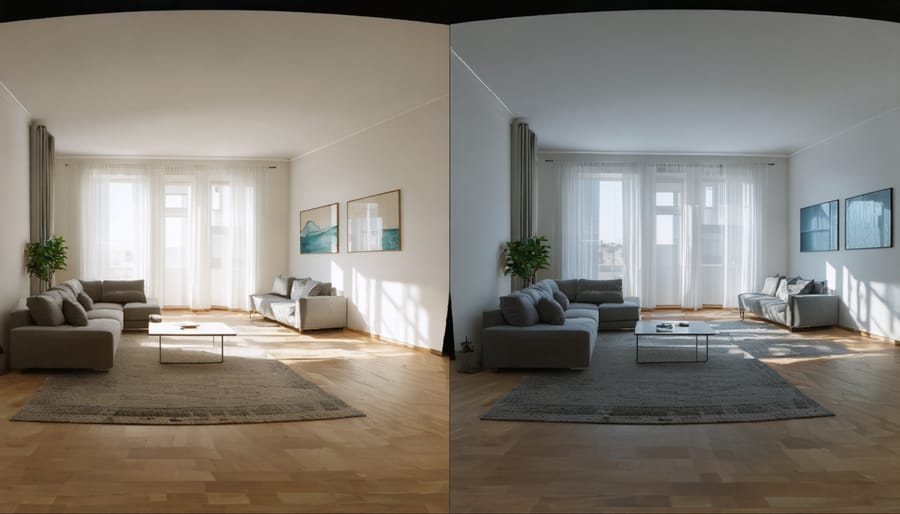
Real-time Design Changes
Unity’s real-time design capabilities revolutionize how we visualize and experiment with interior spaces. As you move furniture around in the virtual environment, changes appear instantly, letting you explore different layouts without lifting a single piece of actual furniture. Want to see how that sofa looks against the opposite wall? Simply grab and drag it in the virtual space.
Color experimentation becomes a breeze with Unity’s dynamic material system. You can switch wall colors, flooring options, and furniture finishes with a single click. This instant visualization helps eliminate the guesswork typically involved in interior design decisions. Whether you’re testing different wood tones for your flooring or exploring various fabric options for your curtains, the changes reflect immediately in your virtual space.
The platform also allows you to adjust lighting conditions to see how your design choices look at different times of day. This feature is particularly valuable when planning room layouts that need to function well in both natural and artificial light. Multiple design variations can be saved and compared side by side, making it easier to finalize decisions and present options to clients.
Immersive Space Planning
Virtual reality brings an unprecedented level of accuracy and experience to room planning, allowing you to walk through spaces before they’re built. By experiencing layouts at true 1:1 scale in VR, you can instantly understand how furniture fits, how traffic flows, and how the space really feels when you’re in it.
Imagine standing in your future living room, reaching out to touch countertops, and seeing exactly how that oversized sofa will fit through the doorway. This immersive visualization helps catch potential issues early, saving time and money on costly modifications later. You can test different furniture arrangements, color schemes, and lighting conditions with just a few clicks, experiencing each variation as if you were physically present.
For designers and clients alike, this technology eliminates the guesswork from space planning. Rather than trying to envision dimensions from 2D floor plans, stakeholders can make informed decisions based on actual spatial experience. Whether you’re planning a home renovation or designing a commercial space, VR provides the confidence that your design decisions will translate perfectly to the real world.
Setting Up Your First Unity VR Design Project
Essential Tools and Hardware
To get started with Unity VR projects for interior design, you’ll need both hardware and software components. The essential hardware includes a VR headset – popular options are the Meta Quest 2, HTC Vive, or Valve Index. These headsets provide immersive experiences perfect for virtual design consultations and project visualization.
You’ll also need a powerful computer with at least 16GB RAM, a dedicated graphics card (NVIDIA GTX 1660 or better), and plenty of storage space for your Unity projects. Consider using an SSD for faster loading times. For development, dual monitors can significantly improve your workflow, allowing you to view both the Unity editor and scene preview simultaneously.
On the software side, download the latest version of Unity Hub and Unity Editor (preferably 2020.3 LTS or newer). You’ll need the Android SDK and JDK if developing for standalone VR headsets like the Quest 2. Essential Unity packages include XR Interaction Toolkit and XR Plugin Management.
Additional helpful tools include:
– SketchUp or Blender for 3D model creation
– Photoshop or GIMP for texture editing
– Visual Studio or Visual Studio Code for scripting
– Version control software like Git
Remember to set up a comfortable, clear space of at least 6×6 feet for VR testing and development.
Basic Project Setup Steps
Getting started with a Unity VR project is simpler than you might think. First, download and install the latest version of Unity Hub and create a new 3D project. Once your project is open, go to the Package Manager (Window > Package Manager) and install the XR Plugin Management package.
In your project settings, enable VR support by navigating to Edit > Project Settings > XR Plugin Management. Check the box for your target VR platform, such as Oculus or Steam VR. This activates the necessary VR components for your project.
Create a new scene or use the default one, and set up your VR camera rig. The easiest way is to use Unity’s XR Origin prefab, which includes everything needed for VR tracking. Simply drag it into your scene from the Project window.
For optimal performance, adjust your project’s quality settings. Go to Edit > Project Settings > Quality and lower some graphics settings if needed. VR applications require smooth performance, so maintaining a high frame rate is crucial.
Don’t forget to configure your build settings (File > Build Settings) and select the appropriate platform for your VR device. At this point, your basic VR environment is ready for adding interactive elements and design features.
Remember to save your project frequently and create a clean folder structure to keep your assets organized as you build your virtual space.
Creating Interactive Design Elements
Furniture Movement and Placement
Creating movable furniture objects in your Unity VR project adds an essential layer of interactivity that brings interior design to life. Start by importing your 3D furniture models into Unity, ensuring they have proper collision components for realistic interaction. Add a Rigidbody component to each furniture piece, making sure to adjust the mass settings to reflect real-world weight characteristics.
To enable furniture movement, create a simple grab script that allows users to pick up and place items using VR controllers. Implement snap-to-grid functionality to help align furniture pieces precisely against walls or other objects. This feature is particularly valuable when creating room layouts that need exact measurements.
Consider adding rotation controls that let users turn furniture pieces in 45-degree increments for easier placement. For a more refined experience, incorporate visual indicators that show valid placement zones and highlight potential collisions with other objects.
Remember to include physics constraints that prevent furniture from passing through walls or floating in mid-air. A simple height limit and floor collision detection will maintain realism. For larger items like sofas or beds, add pivot points that make movement feel natural and intuitive.
Test your furniture placement system thoroughly in VR to ensure smooth interaction and comfortable user experience. Pay special attention to scale and proportion, as these aspects are crucial for creating realistic interior layouts.
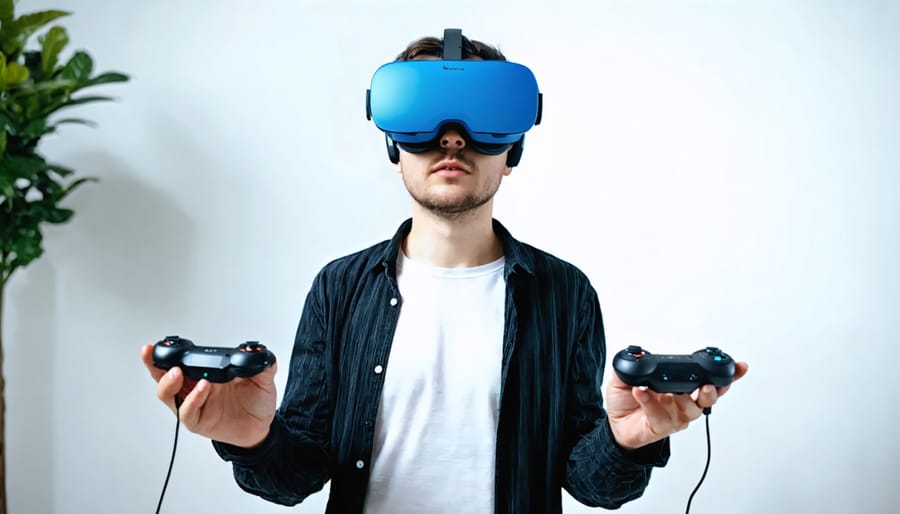
Color and Material Changes
One of the most powerful features in Unity VR for interior design is the ability to dynamically change colors and materials in real-time. This functionality allows designers to instantly showcase different design options while meeting client design requirements. By implementing material switching scripts, you can create interactive elements that change appearance with a simple click or gesture in VR.
To set up material switching, start by creating a material array in your Unity project for each changeable surface. These can include wall textures, flooring options, or furniture finishes. Attach a simple C# script to the target objects, allowing users to cycle through different material options using VR controllers. This creates an immersive experience where clients can visualize multiple design scenarios in real-time.
For walls, consider implementing a color picker tool that lets users select from a custom palette or input specific RGB values. For furniture and fixtures, create preset material combinations that showcase different finishes like wood, metal, or fabric textures. Remember to optimize your material textures for VR performance – large, high-resolution textures can impact frame rates and overall experience quality.
To enhance the user experience, add visual feedback when materials change, such as subtle highlighting effects or sound cues. This makes the interaction more intuitive and engaging for clients exploring different design options.
Practical Applications and Tips
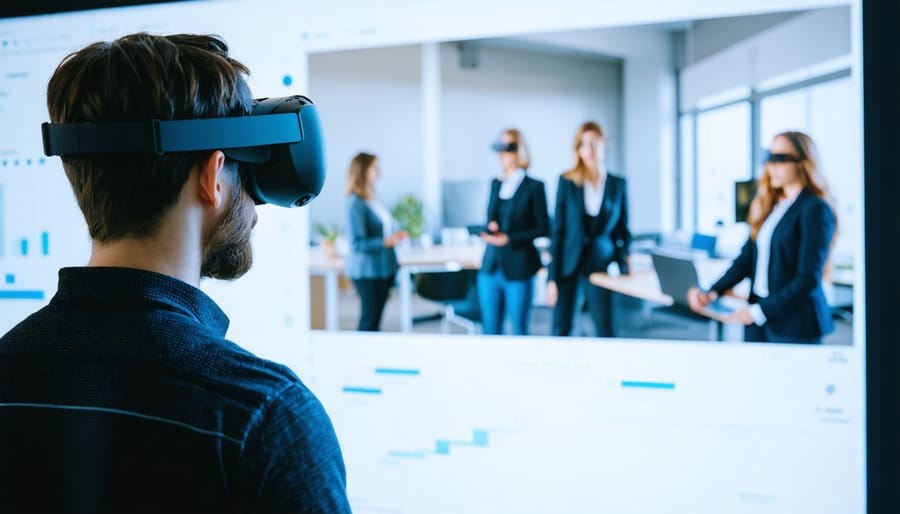
Client Presentations
Unity VR has revolutionized how designers present their work to clients, making client presentations in VR more engaging and interactive than ever before. Instead of showing flat 2D renderings, you can now walk clients through their future spaces in real-time, allowing them to experience the design firsthand.
Setting up client presentations is straightforward: create a designated viewing area in your project, add interactive elements like furniture movement controls, and implement a user-friendly navigation system. You can highlight key design features with spotlights or clickable information panels, making it easy for clients to understand your vision.
The real magic happens during the presentation itself. Clients can change materials, colors, and furniture layouts on the fly, making decisions more confidently. They can check sight lines, assess traffic flow, and even experience the space at different times of day with Unity’s dynamic lighting system. This immersive approach not only leads to better client satisfaction but also reduces revision cycles and speeds up the approval process.
Design Iteration
Unity VR’s iterative design process transforms how we refine interior spaces, making revisions faster and more intuitive than ever before. Instead of rebuilding physical mockups or redrawing plans, designers can make real-time adjustments while immersed in the virtual space. This hands-on approach allows you to grab, move, and modify elements instantly, seeing how changes affect the overall design flow.
Want to test different color schemes? Simply point and click to swap palettes. Need to adjust furniture placement? Use the virtual controllers to drag items to new positions. The beauty of VR iteration lies in its ability to save multiple design versions, letting you compare alternatives side by side or revert to previous layouts with ease.
Teams can collaborate remotely, walking through spaces together and making synchronized changes. This streamlined workflow dramatically reduces the time between concept and approval, as clients can experience modifications immediately and provide instant feedback. The result is a more efficient design process that saves both time and resources while ensuring everyone stays aligned with the project vision.
Virtual reality in Unity offers an incredible opportunity to transform how we visualize and interact with interior spaces. By embracing this technology, you’re not just keeping up with industry trends – you’re positioning yourself at the forefront of innovative design solutions. The ability to create immersive, interactive environments gives you a powerful advantage in presenting concepts to clients and refining designs before physical implementation.
Whether you’re an interior designer looking to enhance your client presentations, a real estate agent seeking to showcase properties virtually, or a homeowner wanting to experiment with different design options, Unity VR projects provide the perfect platform to bring your vision to life. The skills you develop while working with Unity VR are invaluable in today’s increasingly digital design landscape.
Remember, starting your VR journey doesn’t have to be overwhelming. Begin with simple projects, gradually build your expertise, and don’t hesitate to experiment with different tools and features. The investment in learning Unity VR will pay dividends in improved client communication, reduced design revisions, and more efficient project workflows.
Take the first step today by exploring Unity’s VR tools and starting your first project. The future of interior design is here, and it’s more accessible than ever before. Your next great design could be just a virtual reality experience away.
